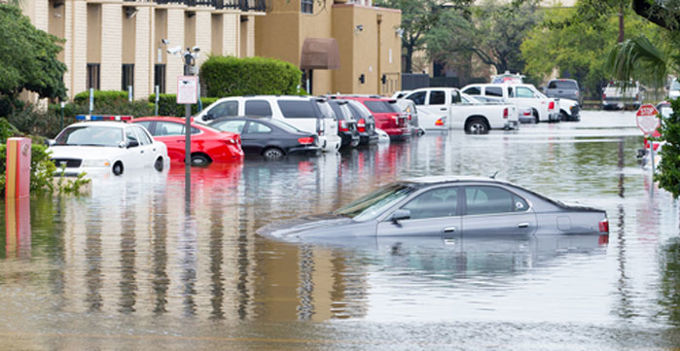
VA Increases Waterfront Property Owners' Resilience to Natural Hazards
Waterfront property owners in Virginia face ever-increasing risk from natural hazards connected to sea level rise, land subsidence, higher temperatures, and more frequent and severe weather events
Some of the major risks confronting waterfront property owners in Virginia over the next few decades are sea level rise, along with more frequent and severe weather events (driven by climate change). On November 2, 2018, Governor Northam signed Executive Order Number Twenty-Four (2018), which is titled “Increasing Virginia’s Resilience to Sea Level Rise and Natural Hazards.” The order confirms that waterfront property owners in Virginia face ever-increasing risk from natural hazards connected to sea level rise, land subsidence, higher temperatures, and more frequent and severe weather events. The first two of this list are of particular concern to Hampton Roads, where water levels are 18 inches higher today than they were a century ago.
As the Order notes, according to a recent report from the United Nations, the water could rise five additional feet by 2100, while the land sinks by 7.5 inches. The harm to waterfront property caused by rising water is made far worse when the property loses elevation.
The Order creates the post of Chief Resilience Officer of the Commonwealth of Virginia, which will be the Secretary of Natural Resources, and tasks him (or her) with the following, among other things:
- Assess the affect sea level rise will have on state-owned buildings.
- Create a Virginia Coastal Resilience Master Plan with the intent to reduce the impacts of tidal and storm surge flooding;
- Inventory and reviewing the state’s pre-disaster mitigation programs;
- Review the state’s compliance with flood protection and dam safety statutes;
- Provide guidance to local governments with regard to sea level rise projections and work with them to ensure that they take the projections into account when making decisions;
- Provide guidance to local governments regarding best practices in establishing freeboard standards;
- Coordinate with federal, state, and local agencies to maximize pre-disaster hazard mitigation trough increased communication and collaboration; and,
- Empower Virginia residents to take individual action to increase the resilience of their own properties by providing access to risk projections and tools to help them reduce risk to existing and new structures.
"The ad hoc efforts by a few localities are a good beginning; a coordinated coastal regional approach would be so much better. Intentions and planning are important, but without funding, there is a limit to what can be accomplished."
While the Order is ambitious in scope, its overall effectiveness is unclear due to the absence of funding (an ongoing problem). In 2016, former Governor Terry McAuliffe signed a bill that created the Virginia Shoreline Resiliency Fund, which was intended as a revolving fund to help homeowners and businesses elevate their properties to prepare for sea level rise. The legislation was necessary because the backlog of similar federal grants meant that it would take over a century for some waterfront property owners in Virginia to get necessary funding to protect their properties. What the legislation did not include, however, was a dedicated funding source. After more than two years, the fund sits empty – a fund without funding.
Climate change is already flooding homes in South Hampton Roads, Virginia. This past June, The Union of Concerned Scientists published a study predicting that in 2030, 848 homes (including 286 in the Greenbrier section of Chesapeake, Virginia) will flood 26 or more times per year, even without storms. The 848 homes have a combined value of $238M; 1,935 people live in them. Some localities in Virginia are taking steps to address resiliency on their own. Norfolk, Virginia started working the problem in 2007. Skip Stiles’ April 2018 article published in The Virginian-Pilot describes the “major resilience planning effort” underway in Norfolk and explains how Virginia Beach is “finishing a comprehensive study of its resilience needs”.
The ad hoc efforts by a few localities are a good beginning; a coordinated coastal regional approach would be so much better. Intentions and planning are important, but without funding, there is a limit to what can be accomplished. Just last week, at William & Mary's Virginia Coastal Policy Center conference on “Building a Resilient Virginia,” panelists from Louisiana claimed that their state’s resiliency efforts have cost approximately $50 billion.
Virginia needs to follow Louisiana’s lead and begin funding its resiliency programs before it is too late.
